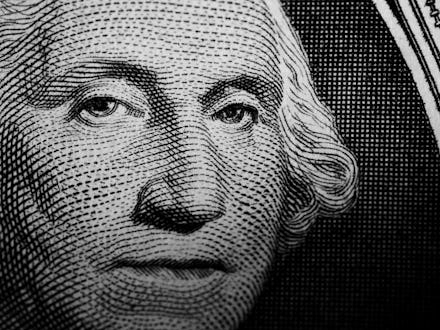Two Charts Prove That Raising the Minimum Wage Really Does Work

From 2013 to 2014, real wages either remained flat or fell for all Americans, with the exception of one segment of the population.
But if your mind immediately darted to images of bankers buying extra bottles of Cristal, you would be mistaken. According to a report by the Economic Policy Institute, wages increased only for those at the 10th percentile — that is, among workers making less than 90% of the rest of the labor force.
If the most educated and highest-earning workers are seeing a decrease in their wages, how are the people clinging to the very bottom of the ladder, the ones battered most brutally by the recession, experiencing an increase? It was the work of the government, in the form of badly needed minimum wage increases.
The background: As economist Elise Gould, the author of the analysis, points out, the widespread trend of wage stagnation and decline is evidence that the labor market isn't as sunny as one might assume by looking at job growth in 2014, which was the best the year for job creation since 1999.
Lower unemployment should spell higher wages for workers; if most people have jobs and feel confident they can find another one, employers are compelled to offer higher wages to their workers in order to retain talent. But there's no evidence that employers are doing this, which suggests that there aren't as many jobs to go around as the official unemployment rate of 5.7% would indicate.
That's in large part because of the hidden unemployment crisis of discouraged workers: people who don't surface in the surveys that the government uses to determine unemployment because they've been jobless for so long they've given up on looking for work. The EPI estimates that close to 6 million people are missing from the labor force. Since job prospects in many sectors are weak, so is the pressure on employers to offer their workers a bigger piece of the pie.
The wage earners who make the least, who are generally uneducated and unskilled, are most vulnerable to this problem. But they do benefit from wage protections in the form of the minimum wage, which increased in 18 states in 2014, according to Gould. States that increased their minimum wage means that the 10th percentile of wages saw a 1.6% increase, while states with no change saw only a 0.3% increase:
Does everyone else need a minimum wage, too? If unemployment improves significantly, that should provide some upward pressure on wages. But that's not likely to mitigate the structural issues that have made wage stagnation an issue for decades.
As EPI President Lawrence Mishel notes in the New York Times, the past 35 years have seen the gross domestic product grow 150% and economic productivity grow 75%, but the real hourly wage of the median worker increased only 5.6%. Since 2002, everyone outside of the top 20% has experienced flat or declining wages.
The reasons for this are many, but the bottom line is that the decline in American workers' ability to bargain has corresponded with a decline in their wages. The demise of trade unions, the rise of cheap foreign labor and a staggeringly low minimum wage have stacked the cards in favor of employers for decades. The less power an employee has, the more they can expect to be exploited.